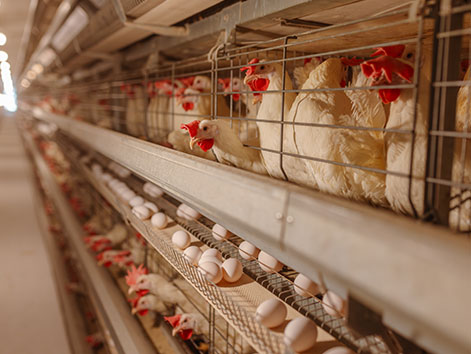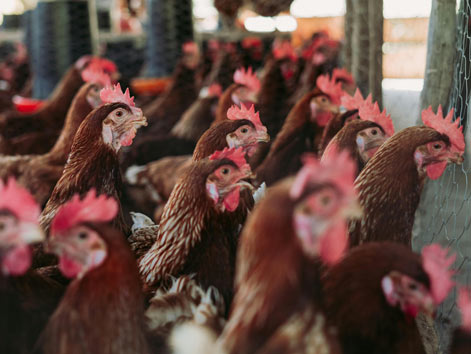Blog
Why not just filter the air?
🔍 At Agrotop, we get asked one question time and time again — especially by new investors and integrators entering the poultry sector: “Why not just filter the air to keep viruses like Avian Influenza out?”
It’s a logical question — and one that reflects growing awareness around biosecurity and disease prevention. But as with many things in modern poultry farming, the answer is more complex than it seems.
We’ve worked across more than 50 countries, designing smart ventilation systems and integrated biosecurity protocols from the ground up. Based on that experience, we believe that air filtration isn’t always the right answer — and this article helps explain why.
So should we filter the air and keep those nasty viruses out?
I have often been asked—especially by investors, and less frequently by farmers—why, if Avian Influenza and other viral diseases cause so much damage to poultry flocks, we can’t simply filter the air and keep the viruses out. It seems like a straightforward solution, but the reality is far more complicated.
First, it’s important to understand that air is not the only way viruses enter a poultry house. Viruses can arrive with the chicks themselves, and people or equipment moving between farms can also introduce infections. Even with strict hygiene protocols, including showers before entry, people can still carry viruses on their skin, clothing, or even in their nasal passages and on nose hairs. Some viruses, like Avian Influenza, are remarkably resilient and can survive on surfaces for many hours, making absolute exclusion extremely difficult.
Second, as I always explain, filtering air to keep viruses out is a technically demanding and expensive process. Mike Czarick’s article, which follows, lays out the scientific and practical reasons why effective air filtration in poultry houses is such a challenge.
In my experience, under normal circumstances, it is not economically viable to filter air for viruses in broiler, layer, or breeder operations. Air filtration might only be justified for very high-value or specialized flocks, such as grandparent stock or SPF egg production, where the investment can be warranted by the value of the birds.
Précis: Five Major Challenges with Installing Air Filtration in Poultry Houses
Mike Czarick’s article outlines the significant obstacles poultry producers face when considering air filtration systems to prevent the entry of airborne viruses, such as avian influenza, into poultry houses. The author emphasizes that effective filtration is far more complex than simply adding screens or netting to air inlets, requiring substantial planning, investment, and ongoing maintenance.
Key Challenges:
- Tiny Virus-Carrying Particles: Viruses travel on particles as small as 1–10 microns, making them extremely difficult to filter out using conventional methods.
- House Tightness: Even well-sealed poultry houses have enough leakage to allow a significant portion of air to bypass filters, especially in negative-pressure systems, undermining filtration efforts unless house tightness is maximized or positive-pressure systems are used.
- Airflow Resistance: High-efficiency filters (MERV 14–16 or higher) greatly increase resistance to airflow, requiring much more powerful fans and larger filter areas, which complicates retrofitting existing houses.
- Fan Limitations: Traditional poultry-house fans are not designed to operate under the high static pressures created by filtration systems, often necessitating upgrades or replacements to maintain adequate ventilation.
- High Costs: Both the initial installation and ongoing operation of filtration systems are expensive, with costs for filters, increased fan capacity, and maintenance (such as frequent filter and belt replacements) adding up quickly.
Conclusion:
Czarick concludes that while air filtration can reduce the risk of airborne disease, it is a technically demanding and costly solution that is rarely fully effective in retrofitted houses. He stresses the importance of consulting qualified engineers and carefully balancing filtration efficiency, ventilation design, and cost before proceeding with installation.
Written by Dr. Mike Czarick and reviewed by Stanley Kays
Source: Five Major Challenges with Installing Air Filtration in Poultry Houses – Mike Czarick



